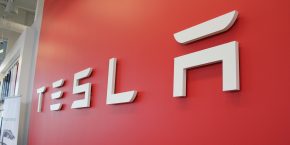
New autonomous driver assist systems are coming to market using eye-tracking and other driver monitoring systems to make sure that drivers are paying attention to the road.
Tesla apparently looked into adding such a system to its Autopilot, but it chose not to because it found it to be ineffective, according to CEO Elon Musk.
Musk’s comment was in response to a Wall Street Journal article claiming that Tesla’s Autopilot team considered adding eye-tracking sensors to the Autopilot hardware suite, but that it was rejected due to the cost.
“Tesla executives including Chief Executive Elon Musk rejected the ideas because of costs and concerns that the technology was ineffective or would annoy drivers with overly sensitive sensors that would beep too often, the people said.”
The CEO replied with a comment on Twitter claiming that it is “false” to say that it was about cost:
This is false. Eyetracking rejected for being ineffective, not for cost. WSJ fails to mention that Tesla is safest car on road, which would make article ridiculous. Approx 4X better than avg.
— Elon Musk (@elonmusk) May 14, 2018
Tesla added a driver-facing camera to the Model 3, which could potentially be used for driver monitoring purposes, but the device is currently not activated.
We previously reported on references to both Autopilot and Tesla Network in Tesla’s source code related to the driver-facing camera.
A Tesla spokesperson also issued a response to the WSJ article:
“Everyone at Tesla is not only encouraged, but expected, to provide criticism and feedback to ensure that we’re creating the best, safest cars on the road. This is especially true on the Autopilot team, where we make decisions based on what will improve safety and provide the best customer experience, not for any other reason.
Ensuring that drivers stay engaged and alert when using Autopilot is extremely important. That is why we designed the system to deliver an escalating series of visual and audio warnings reminding the driver to place their hands on the wheel. That’s also why we’ve taken so many steps to improve this process over time, including an update that prevents a driver from reengaging Autopilot if they ignore repeated warnings. We’ve explored many technologies and opted for the combination of a hands-on-wheel torsion sensor with visual and audio alerts, and we will of course continue to evaluate new technologies as we evolve the Tesla fleet over time.
Tesla Autopilot does not prevent all accidents – such a standard would be impossible – but it makes them much less likely to occur. If you are driving a Tesla equipped with Autopilot hardware, you are 3.7 times less likely to be involved in a fatal accident.”
Electrek’s Take
I am not sure what is “ineffective” about eye-tracking. Our publisher Seth tried GM’s SuperCruise, which has eye-tracking, and he found it to be effective – albeit annoying.
Maybe it was considered simply too annoying. It’s unclear, but we did ask Musk about what he found to be ineffective and we will update if we get an answer.
Driver monitoring systems are coming back into the spotlight as a flurry of new accidents involving Tesla vehicles have been making the news lately and those where Autopilot has been confirmed to be activated during the crash seem to point toward the driver not paying attention.
Tesla drivers are generally annoyed by too many alerts prompting them to keep their hands on the steering wheel, but it’s clear that there might be an issue with some drivers growing overconfident in the system and starting to pay less attention to the road.
Interestingly, Musk recently said that they found that most accidents related to Autopilot happened to experienced drivers.
As usual, we like to remind everyone to stay vigilant while using the Autopilot. While it has been improving a lot lately, it’s still not advanced enough to completely replace a driver’s attention.
FTC: We use income earning auto affiliate links. More.




Comments